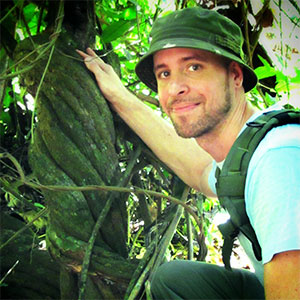“We must not let this precious opportunity to learn how to respectfully manage ayahuasca production slip through our fingertips for there is much at stake beyond the revenue streams of commercialization and subsistence of local livelihoods. We must honor the wisdom of the ages and learn from the symbiotic relationships of the natural world to ensure that the diversity of ways of being and ways of knowing inspired by the interconnection between the human experience and ayahuasca teacher plants remain and continue their dialog in reverence. Therefore, it is crucial that we develop a deeper understanding of the ecology and demography of these plants and how they respond to increasing harvest pressures over time.”
Integral Projection Models: a road map for sustainable ayahuasca production.
“As such, many culturally important plants have become endangered and the essential knowledge about their ancestral use and management has become eroded or lost.”
Transcript Abstract
A current biocultural conservation challenge and sustainability concern of the Amazon Basin that has yet to thoroughly captivate widespread attention and urgently needs our collective efforts to address is the overexploitation of ayahuasca, specifically its source plants Banisteriopsis caapi Spruce ex. Griseb., Diplopterys cabrerana (Cuatrec.) B. Gates, and Psychotria viridis Ruiz & Pav. We have now only begun to witness the effects of the increased harvest pressures of ayahuasca source plants in the Amazon Basin. B. caapi shortages have been reported in an around major cities like Pucallpa and Iquitos where ayahuasca production has grown exponentially over the last decade to provide the brew for the estimated 100-200 centers in these areas and for the exportation of the concentrated brew to various ayahuasca communities and practitioners around the world. To date, it is unclear exactly how many ayahuasca source plants remain in the wild and we can only estimate how many tons of biomass from these plants are harvested annually to meet exponentially growing supply and demand chains. Although there have been considerable efforts towards sustainability where growers and harvesters, syncretic religions like the União do Vegetal and Santo Daime and various stakeholders continue to plant more ayahuasca source plants in and around the Amazon Basin, it is unclear whether or not these efforts will be enough to provide ayahuasca for the foreseeable future. While increased harvest pressure and intensity does not always result in a decline in the persistence of culturally important plants such as ayahuasca, chacruna, or chagropanga over time, these plants have become overexploited while the ayahuasca brew has become commercialized. Therefore, it is critical that we take the necessary steps to evaluate sustainability concerns. Here we explore the use of Integral Projection Models (IPM’s) combined with local and indigenous knowledge to inform biocultural conservation efforts and the development of sustainable ayahuasca (Banisteriopsis caapi Spruce ex. Griseb) production.

